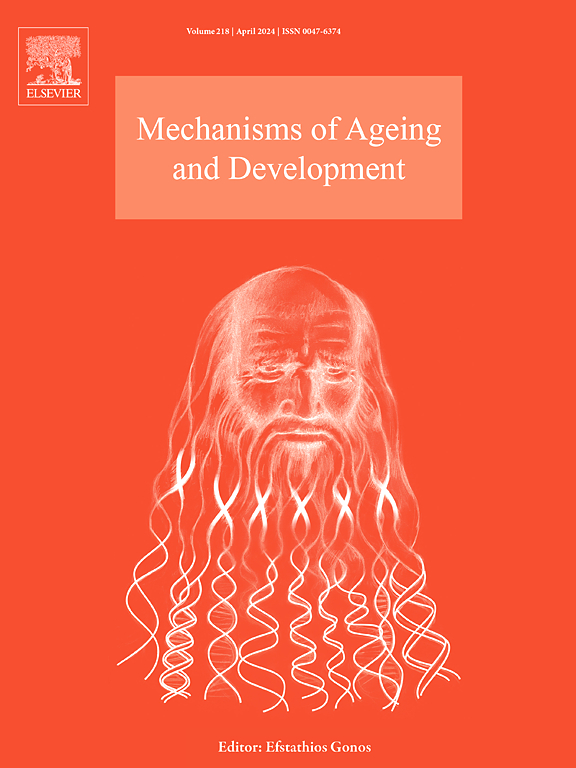淀粉样蛋白阳性阿尔茨海默病中Tau蛋白、淋巴功能障碍和星形细胞激活的分离。
IF 5.1
3区 医学
Q2 CELL BIOLOGY
引用次数: 0
摘要
阿尔茨海默病(AD)以tau蛋白病理、神经变性和认知能力下降为特征。清除病理蛋白的淋巴系统功能障碍和星形细胞活化可能加剧神经退行性变。我们研究了淀粉样pet阳性AD患者中tau积累、淋巴功能障碍和星形细胞激活之间的相互作用,采用沿血管周围间隙扩散张量图像分析(DTI-ALPS)作为淋巴生物标志物。我们的队列包括157名AD患者和117名认知功能未受损的对照组。我们在两个时间点测量了DTI-ALPS、血浆GFAP、海马体积和认知评分。[F18]Florzolotau PET量化tau负荷。回归分析评估了生物标志物与认知能力下降之间的关联,中介分析测试了GFAP在tau驱动的神经变性中的作用。我们还使用tau PET和灰质图像比较了DTI-ALPS和GFAP的地形分布。Tau负担是认知能力下降的最强预测因子,而DTI-ALPS没有显示出显著的认知关联。GFAP介导了tau负荷和海马萎缩之间的联系,暗示了tau驱动的神经退行性变中星形细胞的激活。区域分析显示GFAP在前扣带区和内侧颞区存在关联,而在副矢状面区和外侧前额叶区存在DTI-ALPS模式。这些发现强调tau负担是认知能力下降的驱动因素,星形胶质细胞激活介导神经变性;淋巴功能障碍对认知的影响最小。本文章由计算机程序翻译,如有差异,请以英文原文为准。
Disentangling tau, glymphatic dysfunction and astrocytic activation in amyloid-positive Alzheimer's disease
Alzheimer’s disease (AD) features tau pathology, neurodegeneration, and cognitive decline. Dysfunction of the glymphatic system, which clears pathological proteins, and astrocytic activation may exacerbate neurodegeneration. We investigated the interplay among tau accumulation, glymphatic dysfunction, and astrocytic activation in amyloid PET-positive AD patients using diffusion tensor image analysis along the perivascular space (DTI-ALPS) as a glymphatic biomarker. Our cohort comprised 157 AD patients and 117 cognitively unimpaired controls. We measured DTI-ALPS, plasma GFAP, hippocampal volume, and cognitive scores at two time points. [F18]Florzolotau PET quantified tau burden. Regression analyses assessed associations between biomarkers and cognitive decline, and mediation analysis tested GFAP’s role in tau-driven neurodegeneration. We also compared topographical distributions of DTI-ALPS and GFAP using tau PET and gray matter images. Tau burden emerged as the strongest predictor of cognitive decline, while DTI-ALPS showed no significant cognitive association. GFAP mediated the link between tau burden and hippocampal atrophy, implicating astrocytic activation in tau-driven neurodegeneration. Regional analyses revealed GFAP associations in anterior cingulate and medial temporal areas, contrasting with DTI-ALPS patterns in parasagittal and lateral prefrontal regions. These findings underscore tau burden as the driver of cognitive decline, with astrocytic activation mediating neurodegeneration; glymphatic dysfunction minimally impacts cognition.
求助全文
通过发布文献求助,成功后即可免费获取论文全文。
去求助
来源期刊
CiteScore
11.10
自引率
1.90%
发文量
79
审稿时长
32 days
期刊介绍:
Mechanisms of Ageing and Development is a multidisciplinary journal aimed at revealing the molecular, biochemical and biological mechanisms that underlie the processes of aging and development in various species as well as of age-associated diseases. Emphasis is placed on investigations that delineate the contribution of macromolecular damage and cytotoxicity, genetic programs, epigenetics and genetic instability, mitochondrial function, alterations of metabolism and innovative anti-aging approaches. For all of the mentioned studies it is necessary to address the underlying mechanisms.
Mechanisms of Ageing and Development publishes original research, review and mini-review articles. The journal also publishes Special Issues that focus on emerging research areas. Special issues may include all types of articles following peered review. Proposals should be sent directly to the Editor-in-Chief.

 求助内容:
求助内容: 应助结果提醒方式:
应助结果提醒方式:


